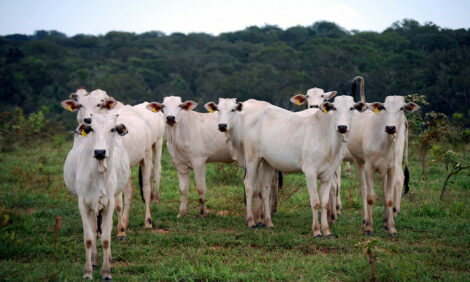



LMC Report: Beef Slaughterings Rise In 2009
NORTHERN IRELAND, UK - In the 2009 calendar year there was an increase of six per cent in total cattle slaughterings. This was driven mainly by an increase in the young bull and cow kill. Steers and heifers together showed virtually no change.The continued increase in the cow kill and the slight increase in the heifer kill drives the ongoing decline in the Northern Ireland (NI) cattle herd. Beef cow numbers have fallen steadily since the late 1990s and DARD’s agricultural census shows beef cow numbers in 2009 to be 257,000 head. This is 50,000 lower than the 2002 figure, a decline of 16 per cent. The result of fewer beef cows is fewer beef calves and this has ultimately led to an ongoing decline in clean slaughter numbers, until this year.
In 2009, the decline has been arrested for several reasons. One key reason is the reduced number of dairy calves exported to the continent in 2008. With a buoyant weanling trade, exports of breeding and store cattle from NI to mainland Europe stood at 33,000 head in 2007. These cattle were generally male calves from the dairy herd, but various changes in the regulatory environment dampened this trade post 2007 with less than half the 2007 figure exported to Europe in 2008. With no cattle exported to the continent in the final quarter of 2008 and only 1,800 head exported in the first half of 2009, there has been increased availability for domestic slaughter.
This increased retention of dairy bull calves explains the increase in the young bull kill in 2009. Another key explanation for the maintenance of the steer and heifer kill is increased imports from Republic of Ireland (ROI) for direct slaughter. In 2008, 14,000 (six per cent of total kill) head were imported by the plants from ROI. In 2009, this figure more than doubled to 36,500 head (eight per cent of total kill). With fewer cattle exported and more imported, the net result was more cattle in total.
It is also worth noting that there have been several consecutive years of increased male calf registrations in the dairy herd. This also helps to offset the decline in production in the suckler herd. However, despite this, there is no escaping the fact that the underlying trend in domestic cattle availability is downward.
With suckler cow slaughterings continuing to rise, the beef herd will continue to decline. In 2009, beef sired calf births were down by 10 per cent compared to 2008. This will feed into lower domestic slaughter numbers in 2011 onwards. Looking at the shorter term, domestic production will almost certainly decline given the five per cent reduction in beef calf births between 2007 and 2008.
There may be an increase in raw material in the form of young bulls, but the steer and heifer kill is likely to decline unless the plants can continue to source from ROI. With reduced production on the home front, competition among the plants for cattle this year is likely to intensify. With numbers also tightening in ROI, they will do well to maintain imports for direct slaughter at the same level as last year. More competition for cattle can only be good for farmers.
Further Reading
| - | You can view the full report by clicking here. |
TheCattleSite News Desk


